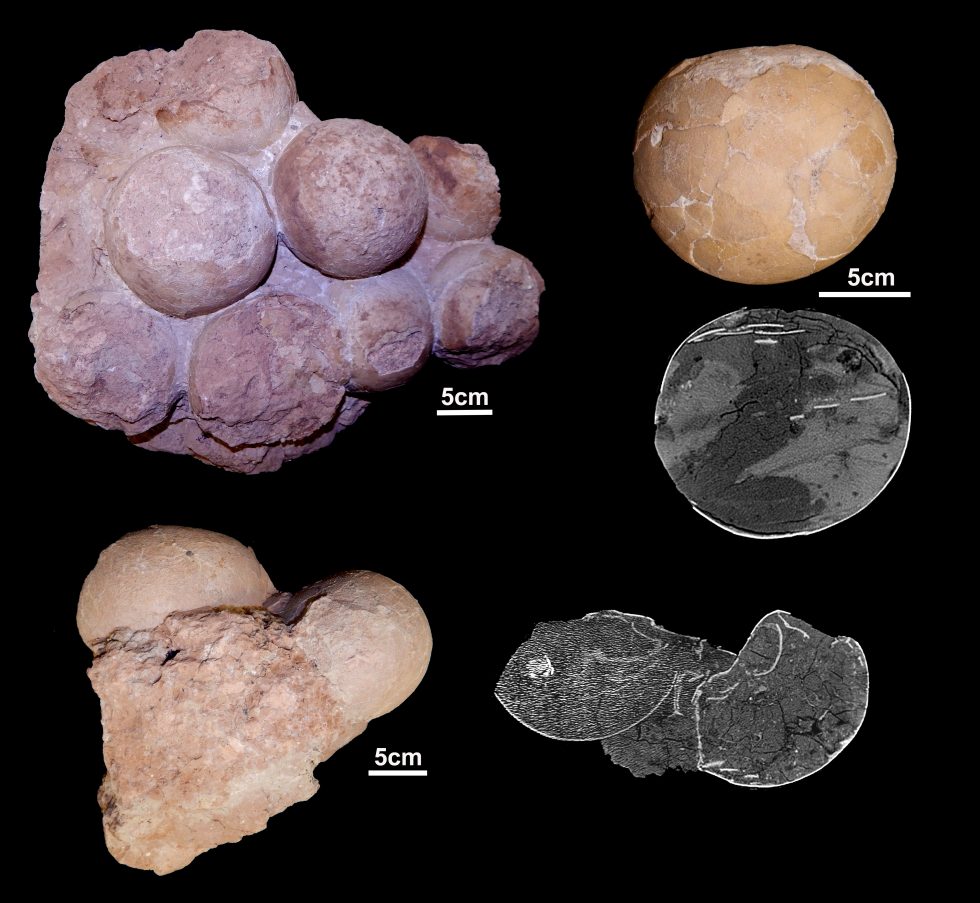Titanosaur nesting spot found in Brazil

Júlia d’Oliveira
They were the largest land creatures the Earth has ever known. But what survived millions of years of fossilization in one specific area of the Ponte Alta region of Brazil was not their massive bones, rather, it was their rare and relatively tiny eggs. And many of them! The first titanosaur nesting site in the country was recently announced in a paper published in Scientific Reports.
Sauropods, a group of long-necked herbivores, were a diverse type of dinosaur that lived from the Jurassic era through the Cretaceous, a period spanning from 201 million years to 66 million years ago. Titanosaurs were a clade of sauropod—a group with a common ancestor—that was the last of this lineage to exist on this planet in the Late Cretaceous. While their name justifiably implies an enormous size, not all of them were huge.
South America is well-known for its titanosaur fossils, particularly in Argentina, home to some of the world’s most spectacular titanosaur nesting sites and embryonic remains. Titanosaur eggshells and egg fragments are known in Uruguay, Peru, and Brazil, but a fossilized egg here and there doesn’t provide evidence of a nesting site. Several egg clutches, numerous eggs and egg fragments in more than one layer of sediment, does.
The discovery marks the northernmost titanosaur nesting site in South America. While we knew the dinosaurs ranged farther north, the lack of known nesting sites there suggested they might have migrated south for egg-laying. The discovery indicates that this wasn’t necessarily the case.
Lost in the limestone
These fossils were found by one of the authors of the paper, João Ismael da Silva, a paleontology technician who works at the Federal University of Triângulo Mineiro in Brazil.
“In the 1990s,” he said in a press release, “I became aware of the occurrence of dinosaur eggs in Ponte Alta. In conversation with friends of mine who worked in limestone mining, I was able to recover some isolated eggs and, finally, an association of ten spherical eggs.”

Image courtesy of Agustín G. Martinellii
Limestone mining was key to the find, which came from the former Lafarge Quarry, which was in operation for 26 years—meaning that substantial ground layers now lie open. But the mine also undoubtedly destroyed many fossils that might have contributed to our understanding of lost ecosystems. The quarry remnants mean this area might have been of extraordinary paleontological value.
In addition to the eggs, the site yielded fossil evidence of crocodyliforms, bits of the bipedal carnivores known as theropods, fragments of titanosaurs, fish, and gastropods.
And this, wrote Dr. Thiago Marinho in an email, “shows how important [it] is to have a paleontologist on large-scale excavations of sedimentary rocks.” (Also from…
Read More: Titanosaur nesting spot found in Brazil
